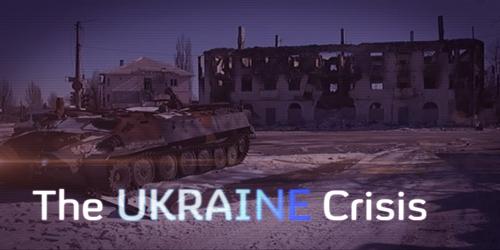Ukraine faced the biggest threat to its national security since the collapse of the Soviet Union in 2014, including most of the twentieth century. The Ukrainian crisis is a combination of the emerging social movement for Ukraine’s integration into the European Union, the February 2014 Ukrainian revolution, and the 2013-15 Euromaidan protests associated with post-Russian unrest. In February, Viktor Yanukovych resigned from office and was replaced by a pro-Western interim government. As the interim government struggled to cope with a risky economy, heavily armed Russian separatists seized government buildings in Crimea and declared independence from the central government in Kyiv with the help of Russian troops. The current crisis began when Russian Special Forces occupied the Crimean peninsula in Ukraine in March 2014. Russia claimed it was protecting its port access to the Black Sea. Ukrainian security services were initially unable to repel the attacks, with soldiers often carrying Russian weapons and equipment but wearing uniforms that lacked any clear markings. Yanukovich’s subsequent ouster sowed new divisions between the eastern and western parts of the country, and fighting between pro-Russian separatists and government forces began in April 2014. In the regions of Loans and Donetsk, separatists established self-proclaimed “people’s republics.”
The crisis began on November 21, 2013, when then-President Viktor Yanukovich suspended preparations for the implementation of an association agreement with the European Union. The decision sparked widespread protests by supporters of the deal. These protests, in turn, led to a revolution in February 2014 to oust Yanukovych. Kyiv’s leaders were forced to consider any possible military response against the possibility of launching a Russian intervention, as thousands of Russian troops crossed the border just to reminisce about the 2008 Russia-Georgia conflict. Since the international media does not include current updates on the situation in Ukraine, this blog will summarize the conflict in Ukraine and provide current information on its economy, security, and politics. The May 25 election brought pro-Western businessman Petro Poroshenko to power, and he continued to try to regain control of the former city. As of August, more than 2,000 people had died in the fighting and millions more had fled their homes, UN officials said. On November 25, 2018, Russian ships attacked and boarded three Ukrainian ships of Azov in the Crimean port near the Black Sea. Ukraine set up freight to blockade the port, citing Russia’s violation of its water blockade, although both sides signed an agreement in 2003 to guarantee free entry through the Strait. The United States and the European Union (EU) have expanded economic sanctions against a growing number of Russian companies and individuals as Ukrainian forces began regularly reclaiming rival territories ahead of the May 2014 presidential election. In this special feature Britannica offers a guide to recent events in Ukraine and explores the historical, historical, and geographical context of the crisis.
At a UN Security Council meeting, critics said Russia’s attack violated international law. The North Atlantic Treaty Organization has increased its military presence in the area. Just as the Russian aggression had already encouraged the Ukrainians to revolt, the unrest in Donetsk and Luhansk oblasts turned into a war against the post-revolutionary Ukrainian government. As the conflict escalated, Rashphone became a pro-Russian rebel against Ukrainian opponents, often backed and aided by the Russian military and its special forces.
















